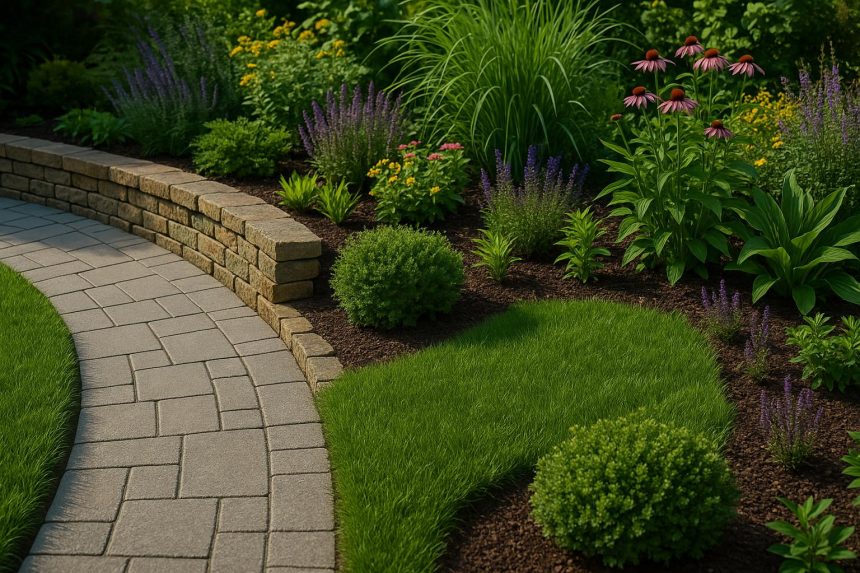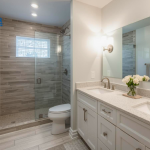Designing a garden that feels both functional and inviting often comes down to finding the right balance between hardscape and softscape elements. While hardscape provides structure and definition, softscape brings life, colour, and movement. Striking the perfect blend between the two creates a harmonious outdoor space that is not only visually appealing but also practical for everyday living. For homeowners looking to achieve this balance with ease, seeking professional landscaping services in Melbourne can ensure every detail is carefully considered.
What’s Hardscape?
Hardscape refers to the non-living, structural elements of a garden. These features create form and organisation, helping define how you move through and use your outdoor space. Examples of hardscape include:
- Pathways and driveways
- Retaining walls and edging
- Patios, decks, and pergolas
- Outdoor seating areas
- Water features, fire pits, and stonework
Hardscape provides stability and flow, often acting as the “skeleton” of your landscape design. Without it, even the most lush planting arrangements can feel unfinished or disorganised.
What’s Softscape?
Softscape encompasses the living, organic elements that bring warmth and vibrancy to your garden. These features add texture, movement, and seasonal change. Examples of softscape include:
- Lawn and ground covers
- Trees and shrubs
- Flower beds and ornamental plants
- Vines and climbing plants
- Herb and vegetable gardens
Softscape is what makes your garden feel alive, constantly evolving with the seasons. It provides colour, fragrance, and the environmental benefits of greenery, from improved air quality to habitat for local wildlife.
Why Balance Matters
A garden with too much hardscape may feel stark, sterile, or unwelcoming. Conversely, an overabundance of softscape can appear wild and unruly, lacking structure. The most successful garden designs are those where hardscape and softscape complement each other:
- Structure and flow: Pathways and retaining walls guide the eye and frame planting areas.
- Practicality and beauty: Hard surfaces make outdoor living easy, while greenery softens the look.
- Seasonal interest: Ever-changing plant life ensures a garden feels fresh against the stable backdrop of hardscape.
Tips for Achieving the Right Blend
Start with a Plan
Sketch out how you want to use your outdoor space. Identify areas for entertaining, relaxation, or gardening, and use hardscape elements to define them. From there, layer in plants that soften edges and enhance the space’s atmosphere.
Use Complementary Materials and Plants
Choose paving, stone, or timber finishes that complement your home’s style, then pair them with plants that thrive in your local climate. This ensures durability and reduces ongoing maintenance.
Prioritise Functionality
Hardscape should support how you live outdoors—whether it’s a patio for family dinners or a path that prevents muddy shoes. Softscape can then be used to bring beauty and comfort to these functional areas.
Embrace Seasonal Change
Select a mix of evergreen and deciduous plants to ensure your garden maintains visual appeal year-round. This also means your softscape will adapt while your hardscape provides a consistent structure.
Seek Professional Guidance
Balancing hard and soft elements requires an understanding of design, soil conditions, and maintenance requirements. Partnering with experienced landscapers can help you avoid common pitfalls and achieve a polished, lasting result.
Ready to get started?
The key to a stunning and functional outdoor space lies in the synergy between hardscape and softscape. By blending structure with nature, you can create a garden that feels both practical and inviting, tailored to your lifestyle and surroundings. Whether you’re starting fresh or reimagining an existing space, working with professionals can make the process seamless and enjoyable.
Lynn Martelli is an editor at Readability. She received her MFA in Creative Writing from Antioch University and has worked as an editor for over 10 years. Lynn has edited a wide variety of books, including fiction, non-fiction, memoirs, and more. In her free time, Lynn enjoys reading, writing, and spending time with her family and friends.















